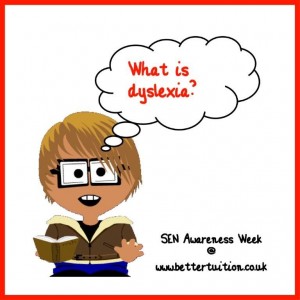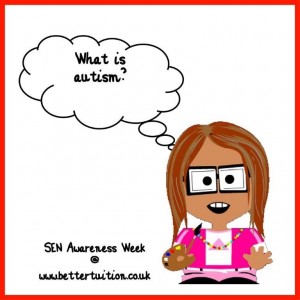
SEN Awareness Week at www.bettertuition.co.uk
This is a guest post from Davyhulme’s most celebrated cat companion, Jayne Dillon (follow her on Twitter). Jayne’s cat won global media attention when she won Cat Protection’s Cat of the Year 2012, due to her special relationship with Jayne’s son, Lorcan, who suffers from Selective Mutism. You can read more about the lessons we can learn from Jessi-Cat here.

Jayne Dillon, whose son suffers from selective mutism, raises awareness about the condition.
Selective Mutism, by Jayne Dillon
Selective Mutism is a rare but important developmental disorder. Children with Selective Mutism speak freely to only a small number of people with whom they feel comfortable, in familiar situations or circumstances. They usually have most difficulty at school, however the patterns of communication (or ‘speaking habits’) vary for each child.
Sudden loss of speech in all situations is called hysterical/traumatic muteness rather than Selective Mutism.
Diagnostic criteria for Selective Mutism
Consistent failure to speak in specific social situations e.g. school, despite speaking in other situations.
The disturbance interferes with educational or occupational achievement, or with social communication.
Duration is at least one month.
Failure to speak is not due to lack of knowledge of, or comfort with the spoken language.
The disturbance is not better accounted for by a communication disorder (eg stuttering).
Selective Mutism was first reported in 1877 by Kussmaul.
Selective Mutism usually starts at pre-school age when children move outside the family circle. It is more common in girls. It is rarely linked with trauma or abuse. Early intervention is more likely to succeed. Intervention needs to be individually tailored and located where the mutism occurs i.e. in school.
Selectively mute children can speak and want to speak but don’t speak. They avoid speaking because of the distress it causes them. Some articulate children describe increased heart rate, breathlessness and sweating – all well known symptoms of anxiety.
In the early stages, attempts to speak are accompanied by anxiety, fear, embarrassment etc. Children become aware of the unpleasant feelings associated with speaking. In time they learn these feelings can be avoided if they don’t attempt to speak. They learn to avoid anxiety by not attempting to speak.
Their behaviour is deliberate self-protection, rather than deliberate opposition.
Early intervention is preferable, to minimise the negative impact on the child, to prevent the situation getting worse and to prevent the behaviour becoming entrenched.
Intervention
Ensure the child fits the Selective Mutism profile.
Take all pressure off the child to speak.
It is useful to explain to the child that you know they find it difficult to speak. Reassure them that the problem will not last forever.
Trafford Local Authority involve Speech and Language Therapists (SLT) in the treatment of Selective Mutism. They follow the Breaking Down the Barriers programme by Maggie Johnson and Anthony H Glassberg. This is a programme given to the school with guidance from SLT. Ideally the class teacher should follow the programme with the child, or a teaching assistant if this is not possible. For the programme to be successful the programme must be followed very seriously and on a very regular basis. The programme is quite complex but basically involves taking all pressure off the child to speak then doing fun things eg playing games. Gradually this builds up to making noises eg banging a drum, to the child making noises eg animal sounds. If the programme is worked through at the correct pace, the child will eventually speak. Other children are brought in to the programme and then familiar adults, then unfamiliar adults.
Another method is described in detail in The Selective Mutism Resource Manual by Maggie Johnson and Alison Wintgens. This is the sliding in method, which is similar to Breaking Down the Barriers.
For the programmes to work, you need someone to be committed to following the programme that the child feels comfortable with.
Things to note :
Remove all pressure to speak.
Never bribe the child to speak.
Never punish the child – they are not being naughty/stubborn.
Do not insist on eye contact.
Do not allow other children to comment on the mutism. Just say the child can speak and will speak.
Be careful when another child speaks for the child.
Regular updates with the parents.
Ensure the SLT comes in on a regular basis or the programme will fail.
Do not make a huge fuss if the child does speak unexpectedly.
Be aware that some selectively mute children will not speak or cry even in pain. It has been noted that one child broke a limb and did not cry.
Teachers need to be imaginative with assessments.
Observe the child for signs of distress – some of these children cannot ask when they need the toilet etc.
Ensure ALL staff are aware of the selectively mute child. It is very distressing if for example a lunchtime supervisor insists on the child answering a question.
Ask questions that enable the child to answer if they want to, eg ‘That is a very lovely picture, I wonder how you did it’. Treat the child as if they will speak.
Allow the child to wave, smile, do thumbs up etc for the register.











